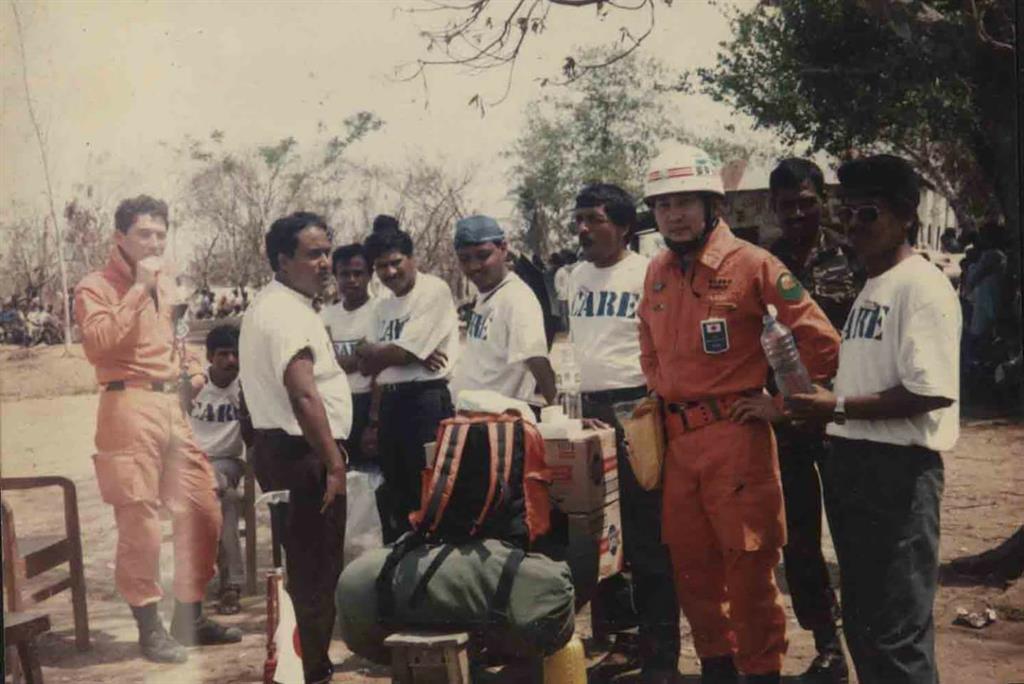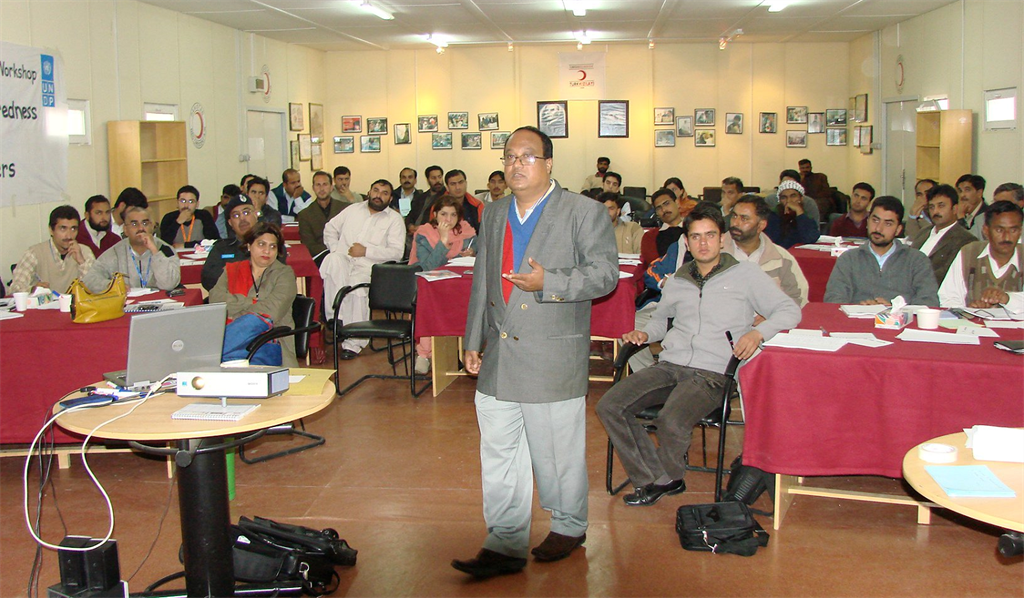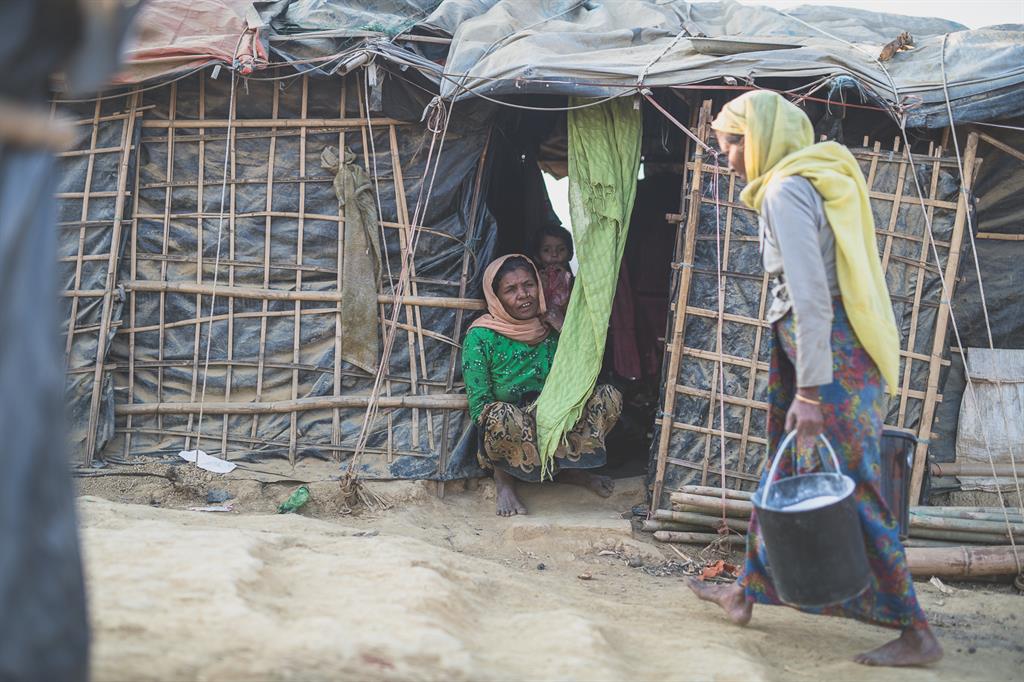
Over 860 000 Rohingya refugees live in Ukhiya and Teknaf, in Cox’s Bazar -WHO Bangladesh/Mehak Sethi
In Bangladesh, Cox’s Bazar is among the districts that are particularly prone to cyclones. It has been affected by at least twelve cyclones since 1970. 2018 and 2019 cyclone seasons have passed without any cyclone but history of the area shows that this was exceptional, and it is uncertain whether 2020 will see another mild season.
Over 860 000 Rohingya refugees in Ukhiya and Teknaf - the vast majority living in 34 densely populated camps - 144 health facilities and many shelters are at risk of being affected by the upcoming cyclone season. When associated with the COVID-19 outbreak, a natural disaster could contribute to worsen the Rohingya refugee crisis in Cox’s Bazar.
On the International Day of Disaster Risk Reduction, we highlight the Health Sector’s pivotal role in enhancing disaster preparedness under the coordination of WHO, in the world’s largest refugee camp.
“I remember perfectly the night of 29 April 1991 when a severe cyclonic storm with high winds struck the coastal areas of Bangladesh causing damages at the port of Chittagong and some parts of Cox’s Bazar District. The impact was devastating with the loss of 138 000 lives and 1.7 million survivors needing assistance”, recalls Taherul Khan, WHO Partner Coordination Officer in Cox’s Bazar.

From personal archive - Taherul Khan (first in white on the left) in Kutubdia Island, Cox’s Bazar, with the Emergency Relief Team from CARE-Bangladesh in 1991.
A national of Bangladesh, Taherul was one of the first responders helping the populations affected by the cyclone in 1991 - a life changing experience that has inspired him to help disaster-affected populations around the world including Pakistan (2005), Indonesia (2007), Samoa (2010) and South Sudan (2015).

From personal archive - Following the 2005 earthquake in Pakistan, Taherul provided capacity building in disaster management for 250 master trainers.
Together with the government authorities and the humanitarian community in Cox’s Bazar, the Health Sector has put in place a 72-hour response plan. The Health Sector’s contingency plan was finalized in September mentioning preposition of essential supplies at strategic locations, strengthening response including capacity of Medical Mobile Teams (MMT) and emergency referral mechanisms.

Cyclone and monsoon preparedness remains a priority in Cox’s Bazar. WHO Bangladesh/Mehak Sethi
WHO prepared and shared with all 44 partners a contingency plan for cyclone/monsoon 2020 seasons for the 34 camps in Teknaf and Ukhiya, which this year includes an evacuation plan for the COVID-19 positive patients under treatment at the Severe Acute Respiratory Infection (SARI) Isolation and Treatment Facilities (ITCs) as well as 32 ambulances.
As part of the preparedness, 10 Camp Health Focal points supported by partners are extending assistance to the health sector while 2 Health Field Coordinators continue to monitor the situation in close collaboration with health sector partners and the support of WHO.
Currently there are 21 Mobile Medical Teams (MMTs) on stand-by, trained to support triage, stabilization, referrals and transport of patients. Each MMT includes a doctor, a midwife/nurse and support staff.
Because a large-scale cyclone incident might lead to emergency response supply shortages for several days, life-saving supplies are prepositioned within the camps. That includes, among others, surgical and trauma supplies, first aid box, essential medicines, malaria and other disease diagnostic kits, outbreak response investigation, sexual reproductive health emergency kits, stretchers/wheel chairs and diesel for generators.
The Health Sector continues to raise awareness on cyclone preparedness and response readiness for the upcoming months in an ongoing process involving camp management, the local government and relevant stakeholders in Cox’s Bazar.
